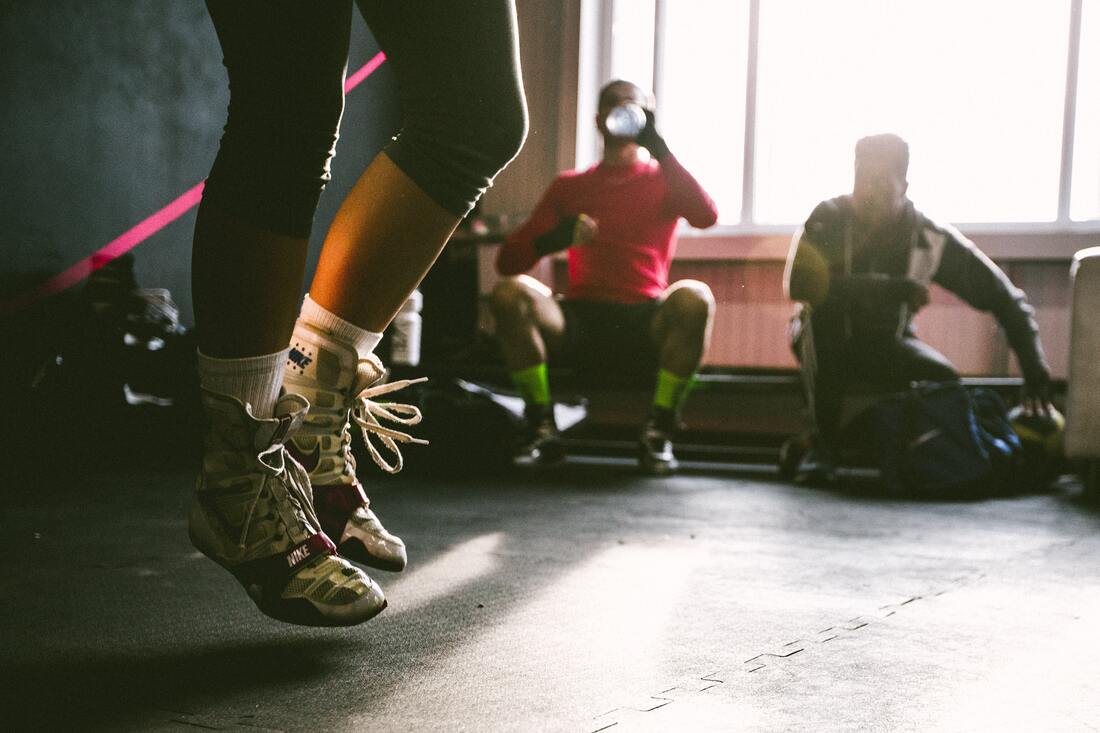|
SEARCH My Blog (Opens in new tab)
About twice as good, actuallyWhile watching a Japanese TV show about girls working out at a kick-boxing gym my ten-year-old daughter suddenly asked me if (rope) skipping is better for us than running. It's a good question because we could all do with more skipping, especially as we get older. "Yes", I replied, "because skipping uses more of your muscles and your brain". That must be why they do lots of skipping but not much running, was her response. "Skipping uses about twice the energy of running, so it makes your body work harder", I added. Mmmm... she murmured - meaning that I had entered the too-much-information territory. My daughter was content to just continue watching the girls training. But the benefits of skipping are underrated, especially if you want to get the most value in the least time. Skipping is also very relevant to our current stay-at-home circumstances as it takes a lot less space to skip than to run. So, how do they measure up?It depends of course what you mean by "better". If you hate skipping and would never do it, and love running, then running is better for you. My "better" means more intense and more value for the time you put in. That's what I call Return On Exercise - ROE. Also, rope skipping helps strengthen the arms and shoulders. If you don't mind spending 30 minutes to run 5km every day - as I do daily - then skipping isn't an alternative, it is a possible addition. If you don't want to spend 30 minutes on cardio but want about the same benefits, then you'll get that from skipping 2 minutes for 5 reps - with a minute break between reps. That's 15 minutes. Let's face it. Most people can run for 2 minutes, but they cannot rope skip for 2 minutes. Skipping is more demanding. Boxers typically skip for 10 minutes at a time. Their muscles become super-efficient at utilising their energy which enables them to endure the rounds of a tournament. We can measure the ratio of skipping versus running effort by referring to METs. MET values show the intensity of an activity. An activity with a MET value of 5 means you're expending five times the energy and calories than you would while at rest. We can measure the total energy expended in "MET Minutes". Example: Walking at a pace equivalent to 5 METs for 30 minutes: 5 METs x 30 mins = 150 MET mins. The average runner is on the jogging side of intensity, which is rated as 6 to 8 METs. Rope skipping at 100 skips/minute is rated at 11 METs - and with more skips per minute, the METS rise to over 12. I'm not comparing here high-intensity running and skipping. High-intensity running is about the same or more metabolic equivalents as rope skipping. Let's check the math:
So in one-third of the time that you spend running, you can get one-half of the benefits. This "half" of the benefits is only the metabolic measure. Skipping also provides both an aerobic workout and coordination-building footwork and strong mental stimulation. Skipping has a wealth of other benefitsThe following statistics on jump roping are from the Jump Rope Institute website founded in 1996 by former Olympian Buddy Lee. Lee states that research has shown that jumping rope for a minimum of five minutes a day can improve physical fitness. When you build to ten minutes of nonstop jumping at 120 RPMs it can provide the same benefits as the following:
In addition - and this is why it is important as we get older - skipping stimulates the left and right hemispheres of the brain, improving our spatial awareness and reading skills, and increases memory and mental alertness. Jumping on balls of our feet requires the body and mind to make neural muscular adjustments to imbalances created from continuous jumping. As a result, jumping improves dynamic balance and coordination, reflexes, bone density and muscular endurance. It is in the synchronous and harmonious coordination of these movements where the secrets and benefits are received. There are also a few side-benefits from rope-skipping:
Here's how to get startedThese videos demonstrate various rope-skipping exercises and techniques: > Jump Rope Lesson #1: Bounce Step > Jump Rope Lesson #2: Alternate Foot Step > Jump Rope Lesson #3: Double Unders (Power Jumping) > Learn The Jump Rope Boxer Skip If you would prefer to spend less time on aerobic exercise or want to add some extra intensity, try skipping. It's worth a try, and it's a fantastic a-home exercise. Follow me on Quora for more health and fitness tips.
If you valued this article >> Follow me Leave a comment >> Share it >> Stay healthy If you have any questions email me and I will get back to you. Latest: get your free customised fitness plan designed uniquely for you.
|
ChoicesSince I was diagnosed at 50 with Type 2 diabetes I've been learning how to do bone-building fitness training which lowers my age. You can too. It's your choice. Walter Categories
All
Archives
May 2023
|

 RSS Feed
RSS Feed 


